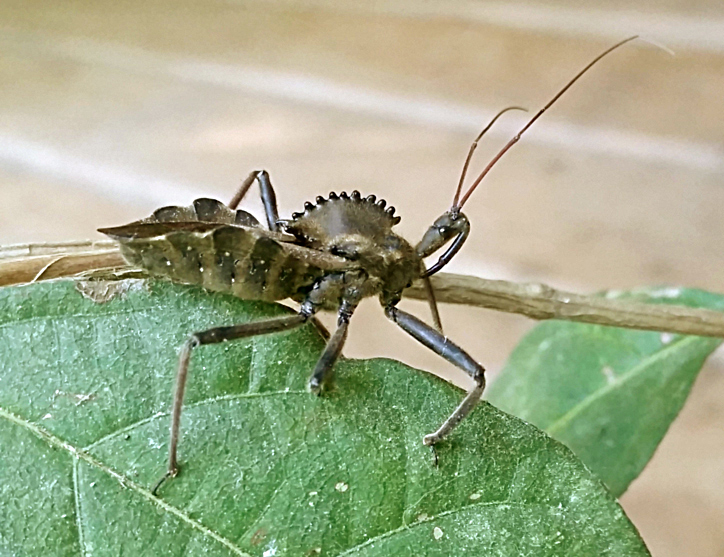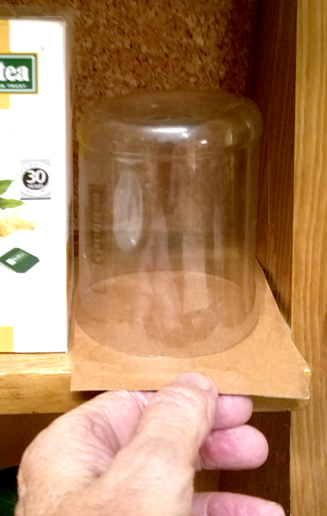
While it’s nothing to panic about, you need to be wary of Belize’s native Assassin Bug. It is most commonly seen in spring and summer, so become familiar with it so you can identify and avoid it. The Assassin Bug is native, and an important part of the environment, so don’t go crazy with the bug spray if you find one. Just escort it outside.
Examine this photo and notice the long skinny head, the bulgy eyes, and the soft wings bordered with a checkerboard pattern. This one was photographed here at BIB, as were its close relatives the Wheel Bug (check out it’s cool, geared “wheel”!), and the Flag-footed Bug, which you can often spot on the lovely passionflowers of the granadilla vines. Assassin Bugs are also found in the Southern US.

Assassin Bugs feed mainly on other insects or plant juices, but if they get into your house you’ll need to remove them because they might wander into your bed at night and “kiss” you. The name Kissing Bugs comes from their tendency to bite (or “kiss”) people on the face, leaving swollen, painful bumps.
You don’t really want that to happen, so if you hang washing out for the sweet smell of sun-dried clothing, shake things out before you fold and put them away. Hopefully, you’re already careful about putting your hands into dark places without looking first (think spiders, scorpions and such), because Assassin Bugs may be hanging out around storage areas or in leaf litter. They like to conceal themselves in cracks and crevices.

While its bite can be painful, the Assassin Bug is also a vector for Chagas Disease, (which you probably don’t want to research because it’s good nightmare material). The important information is that some species of Assassin Bugs can transmit Chagas, an inflammatory infectious disease that can lead to heart and digestive problems if left untreated. While Chagas can come from an Assassin Bug bite, according to the CDC, it’s most often transmitted through the bug’s feces or through the blood transmission of an infected person. So just be careful, watch for these bugs, and escort them elsewhere if you encounter them.

Here’s a great little bug catcher you can make by cutting away the top of an empty water bottle and using a piece of cardboard to slide under bug and bottle to imprison it. Keep it handy on a shelf where you can grab it quickly if needed for insect transport.
https://www.terminix.com/blog/bug-facts/kissing-bug-little-insect-with-a-big-reputation/
Well, it’s a pretty little bug, but I sure wouldn’t want a kiss from it — thanks for the info! BTW, any little jelly jar, or water glass or pint jar will work for catching bugs–including wasps–on the window or any flat surface. It just needs to be clear, so you can see if you got the bug or not. A 3×5 card is heavy enough for the cardboard. You just put the jar over the bug, slide the card under bug and jar to make a lid for it, and holding the card down, carry both outside. Works fine! You can even set it down for a minute (if you keep holding the card in place, or put something lightweight like a paperback book on top of it) while you open the door.
Good advice!